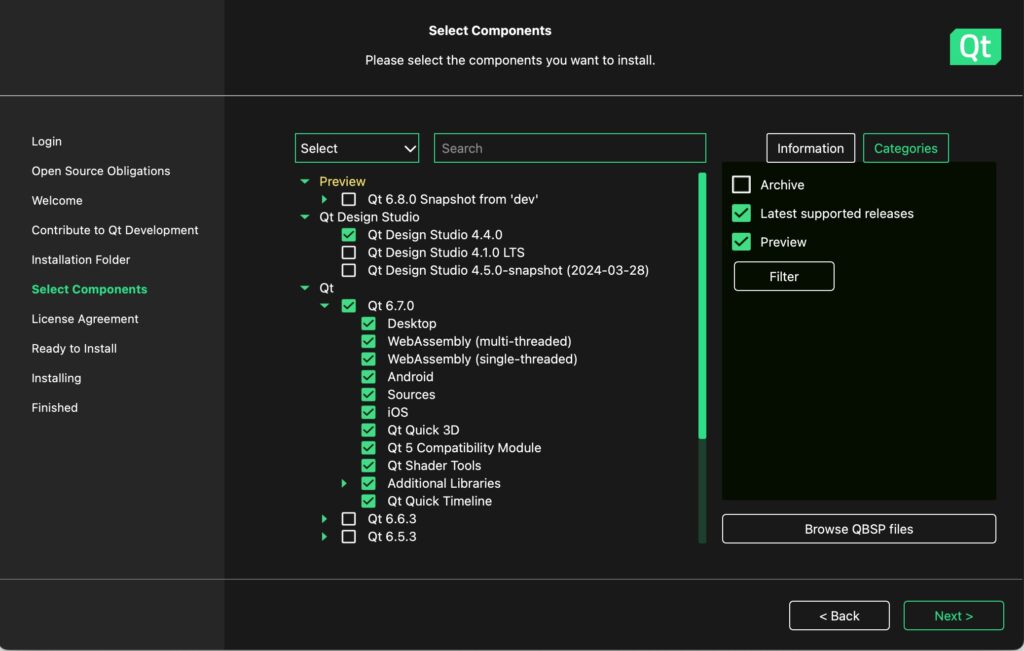
The Qt Company has released version 6.7 of the Qt framework as well as Qt Creator 13, a new version of the cross-platform IDE for Qt described as “AI-Enabled.”
A big feature in Qt 6.7 is improved C++ 20 support, though this remains “opt-in and experimental” according to the release post. Chief maintainer Volker Hilsheimer said there is no reason to “require C++20 to build or use Qt,” but that some of the additions to the language are helpful, including the three-way comparison or “spaceship” operator, which returns not just a binary result but an ordering of what is being compared.
Hilsheimer also said that std::span, an addition to the standard library, is useful and has also been implemented for C++17 as QSpan.
Qt Graphs, first previewed in Qt 6.6 in October last year, has been enhanced with 2D bar, line and scatter graphs, though the library remains a technology preview.
Improved support for REST APIs comes via three new classes, QHttpHeaders, QRestAccessManager, and QRestReply. There are also improvements to Qt gRPC and Qt Protobuf, also in technology preview, but with full release promised for the next version, Qt 6.8, at which point support for HTTP/2 will be complete, Hilsheimer wrote.

Fonts and icons are enhanced in this version with variable fonts, which allow full control over how the glyphs of fonts appear via floating point parameters. There is now also enabled support for native icon libraries on Apple, Android and Windows. SVG support is improved.
One of the dilemmas of cross-platform development is how to take advantage of platform-specific features. Qt 6.7 now supports embedding native windows into a Qt Quick scene, enabling use of native controls like MapView on Apple platforms, or Windows Media Player, as well as platform-specific graphics APIs like Direct3D or Metal.
Platform support has been updated and now includes macOS 14, iOS 17, Windows 11 23H2 and Android 14, along with additional Linux distributions. Windows on Arm is in technology preview. A developer asked about Qt WebEngine for Windows on Arm and was told that “this depends on the availability of Chromium for that platform,” showing that Google’s introduction of Chrome for Windows on Arm, on Snapdragon chipsets, has positive side-effects for native Windows on Arm development.
Along with Qt 6.7, the Qt Creator 13 IDE has arrived, with new light and dark mode themes, an improved docking UI for debug and widget designer modes, and support for devices using Qt Application Manager, a headless daemon for running complex UIs on embedded Linux systems. The IDE now also supports setting up language servers for YAML, JSON and Bash, enabling rich editor features for those languages. Qt for Python, which allows the use of the Qt API in Python applications, has improved support in Qt Creator with the ability to generate Python kits.
The AI element comes from GitHub Copilot integration, which requires a separate subscription and license. The company claims that coding tasks are up to 55 percent faster with Copilot, based on GitHub research from 2022.
The history of Qt goes back to the early 90s, but the framework remains popular thanks to the high performance of native binaries, with no virtual machine required, combined with the productivity of cross-platform support. The evolution of Qt is conservative rather than cutting-edge but that is no bad thing for developers who appreciate its consistency.
